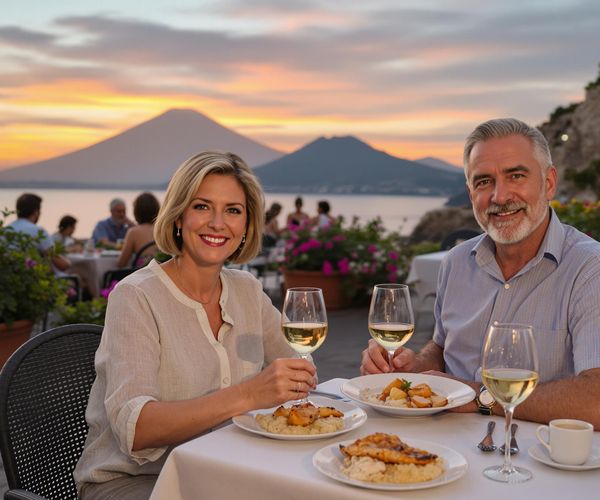
Positano: The Jewel of the Amalfi Coast
Discover Positano, a picturesque village on the Amalfi Coast renowned for its stunning cliffs, charming streets, and beautiful beaches. A true gem of Italy's coastal wonders.
Nestled on the cliffs of the Amalfi Coast, Positano is a breathtaking destination that captures the essence of Italian charm and beauty. This picturesque village is known for its steep, narrow streets lined with vibrant bougainvillea, charming cafes, and boutique shops. As you wander through the winding alleys, you’ll be greeted with stunning views of the turquoise Mediterranean Sea. Positano is also famous for its stunning beaches, such as Spiaggia Grande and Fornillo Beach. These sun-soaked shores are perfect for relaxing and soaking up the Italian sun. The clear waters are ideal for swimming, snorkeling, and other water activities. Don’t miss the chance to take a boat tour along the coast to see the dramatic cliffs and hidden coves from a different perspective. The town is rich in history and culture, with landmarks like the Church of Santa Maria Assunta, featuring a beautiful dome and ancient Byzantine icon of the Madonna. Positano’s culinary scene is another highlight, offering delicious seafood dishes, fresh pasta, and locally produced wines. Dining in a cliffside restaurant with panoramic sea views is an experience you won’t forget. Positano truly offers a perfect blend of natural beauty, cultural heritage, and culinary delights.
Local tips in Positano
- Wear comfortable shoes as Positano's streets are steep and uneven.
- Visit in the shoulder seasons of spring or fall to avoid the crowds and enjoy milder weather.
- Try the local Limoncello, a lemon liqueur that is a specialty of the region.
- Book accommodations well in advance, especially during the peak summer months.
- Take a day trip to nearby towns like Amalfi and Ravello for more stunning views and experiences.
Positano: The Jewel of the Amalfi Coast
Nestled on the cliffs of the Amalfi Coast, Positano is a breathtaking destination that captures the essence of Italian charm and beauty. This picturesque village is known for its steep, narrow streets lined with vibrant bougainvillea, charming cafes, and boutique shops. As you wander through the winding alleys, you’ll be greeted with stunning views of the turquoise Mediterranean Sea. Positano is also famous for its stunning beaches, such as Spiaggia Grande and Fornillo Beach. These sun-soaked shores are perfect for relaxing and soaking up the Italian sun. The clear waters are ideal for swimming, snorkeling, and other water activities. Don’t miss the chance to take a boat tour along the coast to see the dramatic cliffs and hidden coves from a different perspective. The town is rich in history and culture, with landmarks like the Church of Santa Maria Assunta, featuring a beautiful dome and ancient Byzantine icon of the Madonna. Positano’s culinary scene is another highlight, offering delicious seafood dishes, fresh pasta, and locally produced wines. Dining in a cliffside restaurant with panoramic sea views is an experience you won’t forget. Positano truly offers a perfect blend of natural beauty, cultural heritage, and culinary delights.
When is the best time to go to Positano?
Iconic landmarks you can’t miss
Arienzo Beach Club Positano
Discover the charm of Arienzo Beach Club Positano, an idyllic lido perfect for relaxation, Mediterranean cuisine, and stunning coastal views.
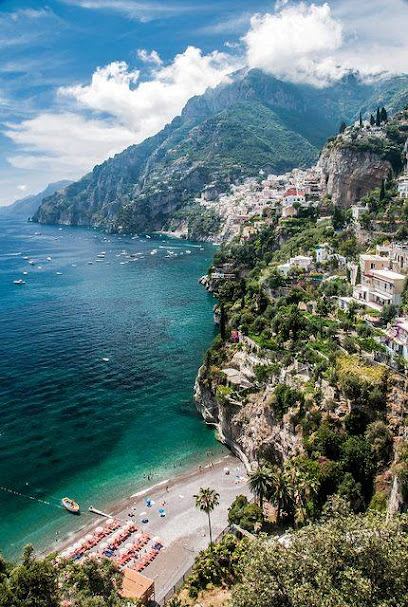
Costiera Amalfitana Positano
Experience the breathtaking beauty and rich culture of Positano, a stunning coastal gem on the Amalfi Coast, perfect for unforgettable memories.

Chiesa di Santa Maria Assunta
Discover the captivating beauty and rich history of Chiesa di Santa Maria Assunta, a must-visit Catholic church in the heart of Positano.
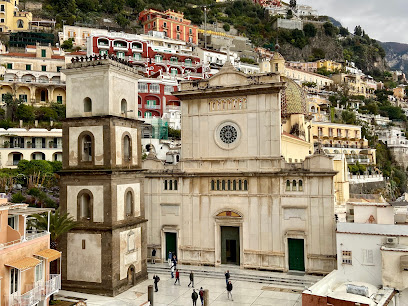
Le Sirenuse
Discover the timeless elegance of Le Sirenuse, Positano's luxury hotel offering stunning sea views, exquisite dining, and a perfect coastal retreat.

Art Hotel / Hotel Pasitea
Discover the enchanting Art Hotel Pasitea, where stunning views of Positano meet Italian elegance and modern comfort for an unforgettable stay.

Ceramiche Casola
Discover the vibrant artistry of Ceramiche Casola in Positano, where handcrafted pottery reflects the enchanting culture of Italy's Amalfi Coast.
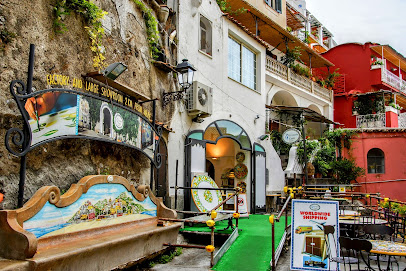
Spiaggia di Positano Marina Grande
Discover the breathtaking beauty of Spiaggia di Positano Marina Grande, a must-visit public beach on the stunning Amalfi Coast.
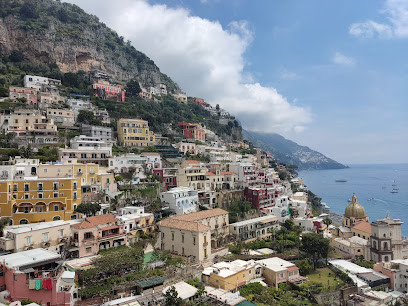
MAR Positano Villa Romana
Immerse yourself in ancient Roman history and artistry at MAR Positano Villa Romana, a captivating museum in the heart of Positano's stunning landscapes.

Positano Boats
Discover the beauty of the Amalfi Coast with Positano Boats, offering unique boat rental experiences for unforgettable journeys.
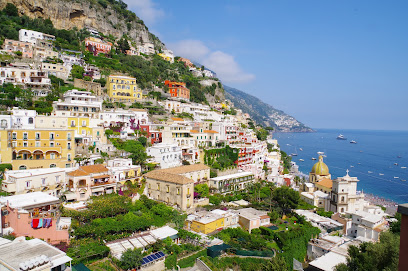
Casa Nilde
Discover the charm of Positano at Casa Nilde, a cozy bed & breakfast with stunning sea views and authentic Italian hospitality.

Villa Fortuna
Discover the charm of Villa Fortuna, a serene bed & breakfast in Positano offering stunning views and authentic Italian hospitality.
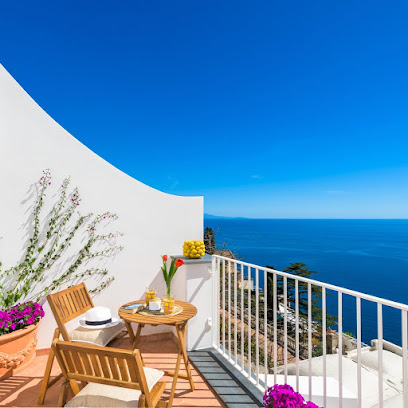
Kayaking in Positano
Embark on a kayaking adventure in Positano, exploring hidden beaches and stunning coastal landscapes of the Amalfi Coast.
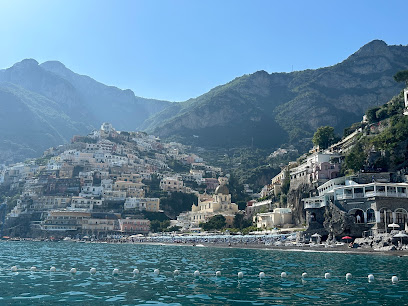
Swirl the Glass
Discover Italy’s exquisite wine culture with Swirl the Glass, where expert-led tastings and vineyard tours await you.
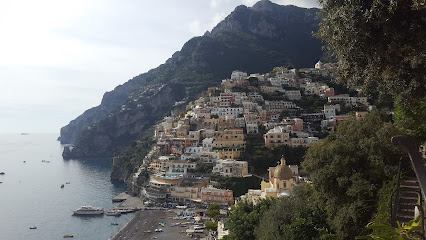
Cassiopeia Cooperative arl
Discover Positano's beauty through personalized tours with Cassiopeia Cooperative, your gateway to the Amalfi Coast's hidden gems and cultural experiences.
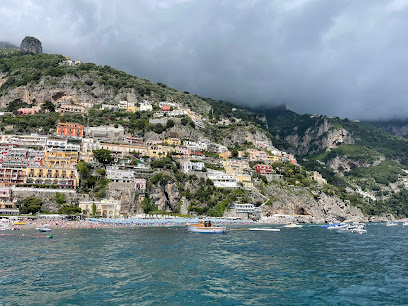
Villa Boheme Exclusive Luxury Suites
Discover Villa Boheme in Positano: Luxurious Suites with Breathtaking Views and Unmatched Hospitality on the Amalfi Coast.

Unmissable attractions to see
Amalfi Coast
Discover the breathtaking beauty of the Amalfi Coast, a UNESCO World Heritage site with stunning cliffs, charming villages, and rich Italian culture.
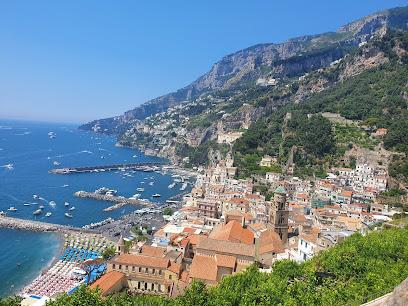
Archaeological Park of Pompeii
Explore the ancient wonders of Pompeii, a UNESCO World Heritage site that unveils the life and culture of a Roman city frozen in time.
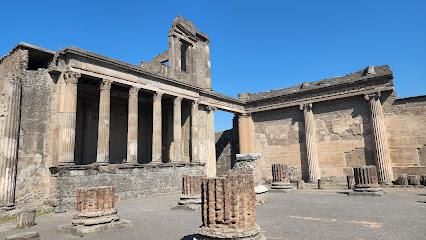
Sansevero Chapel Museum
Explore the Sansevero Chapel Museum, a masterpiece of Baroque art and history in Naples, featuring the stunning Veiled Christ and a rich cultural heritage.
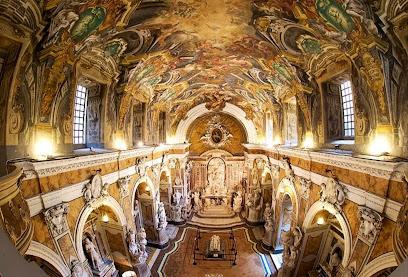
Ovo Castle
Explore the rich history and breathtaking views at Ovo Castle, a stunning medieval fortress in Naples overlooking the beautiful Bay of Naples.
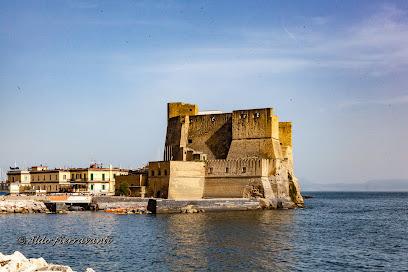
Vesuvius National Park
Explore Vesuvius National Park, where breathtaking vistas and rich biodiversity await amidst the iconic landscape of an active volcano.
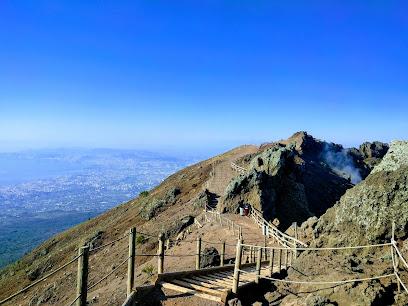
Museo Archeologico Nazionale di Napoli
Discover the splendor of ancient civilizations at the Museo Archeologico Nazionale di Napoli, featuring remarkable artifacts from Pompeii and Herculaneum.

Castel Sant'Elmo
Experience the rich history and stunning views at Castel Sant'Elmo, Naples' iconic fortress and cultural landmark.
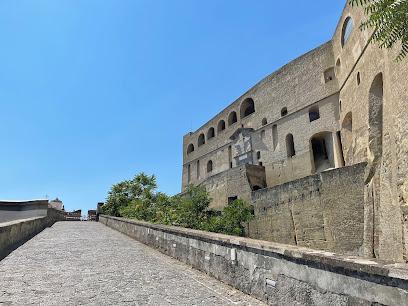
Castel Nuovo
Experience the grandeur of Castel Nuovo in Naples, a historic castle that narrates the city's captivating story through its majestic architecture.
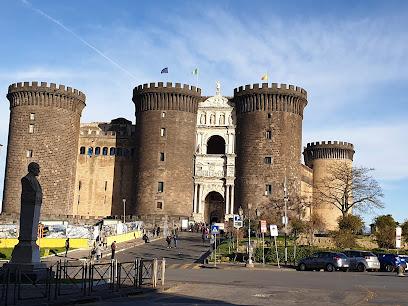
Museo e Real Bosco di Capodimonte
Discover the artistic treasures and serene gardens of Museo e Real Bosco di Capodimonte, a must-visit cultural landmark in Naples, Italy.
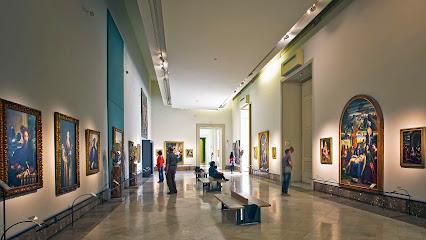
Underground Naples
Explore the fascinating depths of Underground Naples, where history, art, and adventure converge in an unforgettable journey beneath the city.
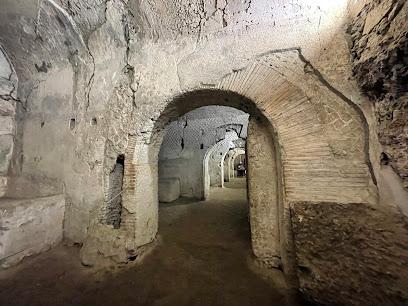
Duomo di Napoli
Explore the stunning beauty and rich history of the Duomo di Napoli, a must-see cathedral in the heart of Naples, Italy, blending art and spirituality.
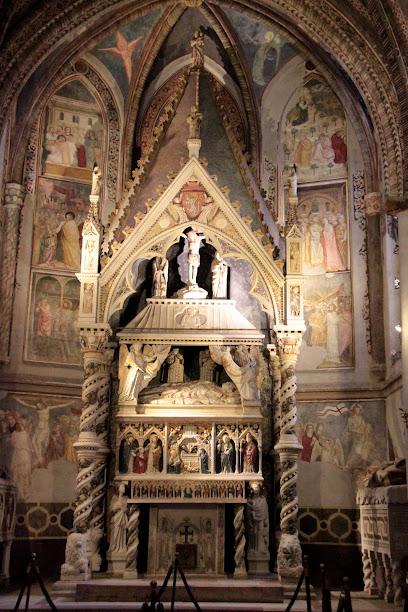
Villa Rufolo
Discover Villa Rufolo, a breathtaking historical landmark in Ravello offering stunning gardens and panoramic views of the Amalfi Coast.
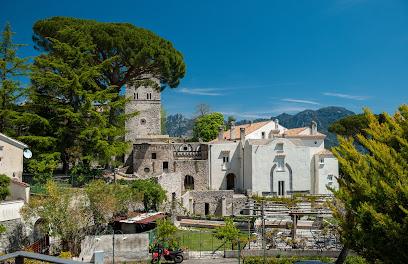
Chiesa del Gesù Nuovo
Explore the stunning Chiesa del Gesù Nuovo in Naples, a Baroque architectural gem filled with history, artistry, and spiritual significance.
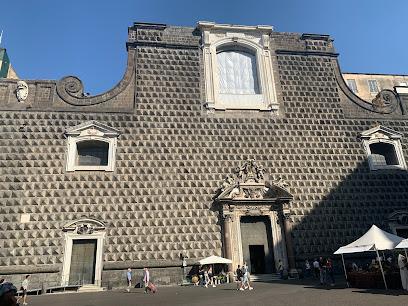
Complesso Monumentale di Santa Chiara
Discover the serene beauty of the Complesso Monumentale di Santa Chiara, a historic monastery in Naples, showcasing stunning architecture and rich spiritual heritage.
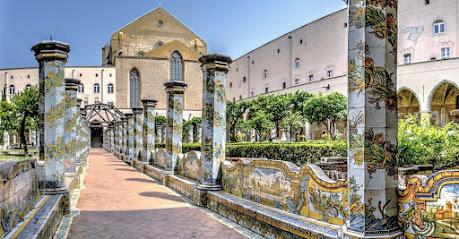
Murale Diego Armando Maradona - Quartieri Spagnoli
Discover the vibrant Murale Diego Armando Maradona in Naples, a stunning tribute to football's legend, capturing the city's spirit and passion.

Essential places to dine
La Tagliata
Experience authentic Italian cuisine at La Tagliata with breathtaking views over Positano on the stunning Amalfi Coast.
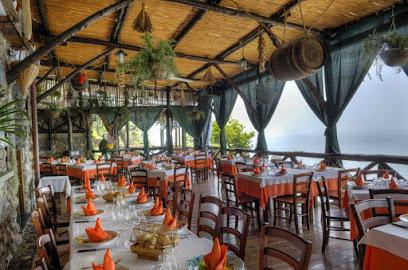
Chez Black
Discover the taste of Italy at Chez Black in Positano – where fresh seafood meets breathtaking coastal views.
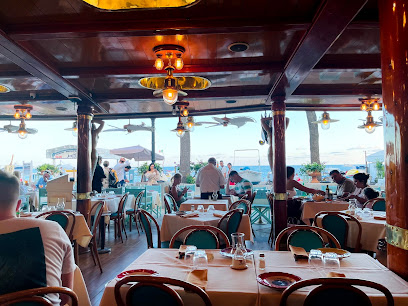
Da Vincenzo Positano
Discover exquisite Italian cuisine with stunning sea views at Da Vincenzo in Positano - a culinary gem on the Amalfi Coast.
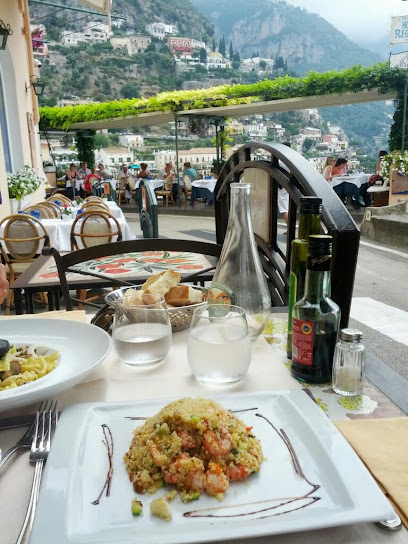
Saraceno d'Oro
Experience authentic Italian cuisine with stunning sea views at Saraceno d'Oro in Positano.
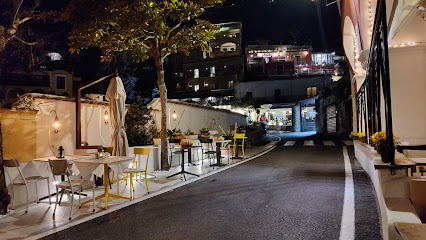
Il Ritrovo
Experience exquisite seafood and traditional Italian cuisine at Il Ritrovo, set against the stunning backdrop of Positano's Amalfi Coast.
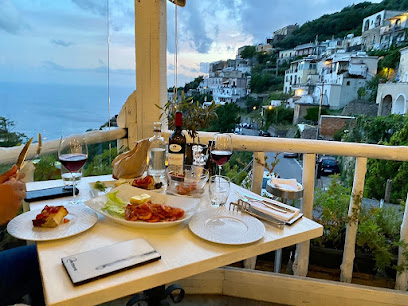
Il San Pietro di Positano
Discover unparalleled luxury and exquisite cuisine at Il San Pietro di Positano, where breathtaking views meet exceptional hospitality.

Casa e Bottega
Discover authentic Italian cuisine and artisanal crafts at Casa e Bottega in beautiful Positano.
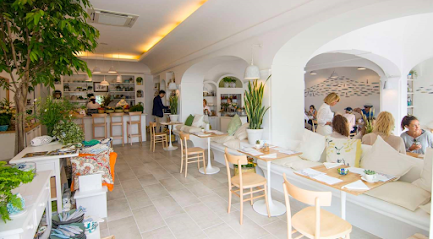
Ristorante Bruno
Discover authentic Italian flavors at Ristorante Bruno in Positano, where exquisite seafood meets breathtaking coastal views.
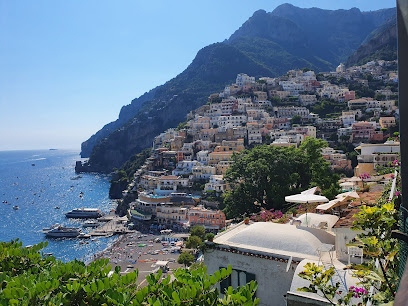
Lo Guarracino
Discover authentic Italian flavors and fresh seafood with stunning views at Lo Guarracino in beautiful Positano.

Ristorante Adamo ed Eva Positano
Experience authentic Italian flavors at Ristorante Adamo ed Eva in Positano, where stunning views meet exquisite Mediterranean cuisine.
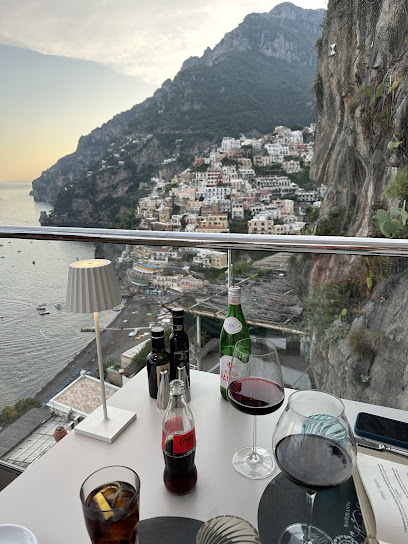
Mediterraneo
Experience exquisite Mediterranean flavors at Mediterraneo in Positano with stunning coastal views and fresh seafood delights.
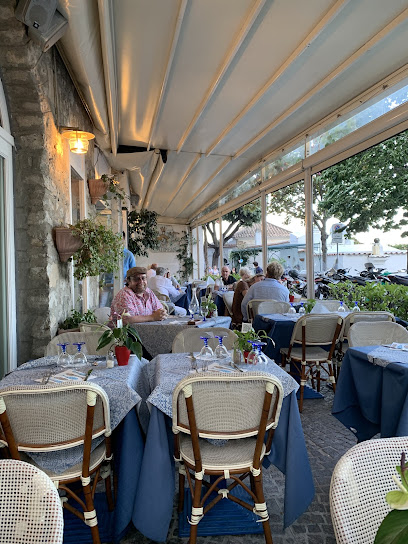
Posides
Discover Posides: A coastal culinary gem in Positano offering stunning views and authentic Italian cuisine.
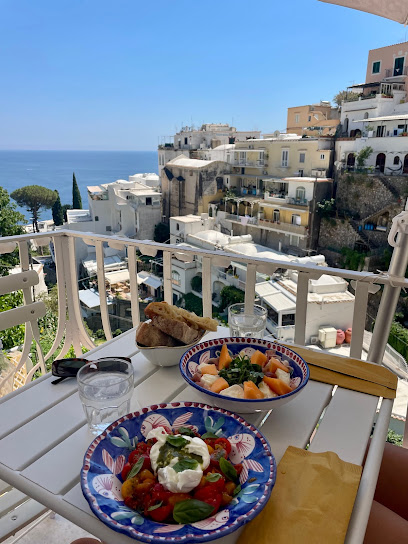
Ristorante Da Costantino
Experience authentic Italian flavors at Ristorante Da Costantino in Positano – where every meal is a feast for the senses amidst breathtaking coastal views.
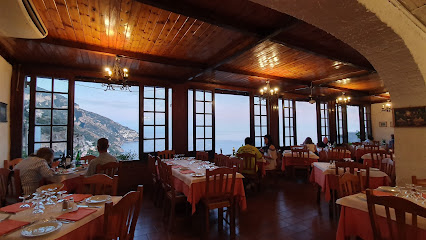
Ristorante C'Era Una Volta
Experience authentic Italian flavors at Ristorante C'Era Una Volta in Positano - where every meal is a celebration of culinary artistry.
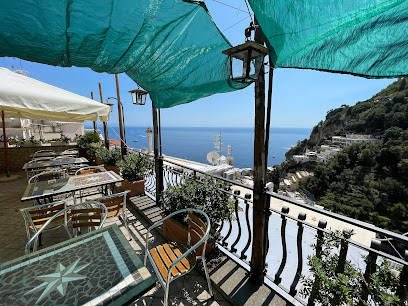
Il Fornillo
Discover authentic Italian seafood at Il Fornillo in Positano - where breathtaking views meet exquisite flavors.
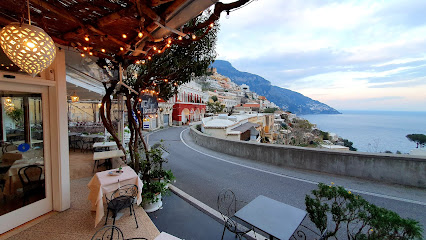
Markets, malls and hidden boutiques
Absolute Positano
Explore the enchanting art and souvenirs at Absolute Positano – your gateway to the heart of Italian creativity and culture.
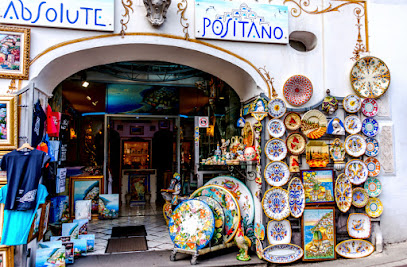
Nanà Positano
Explore the exquisite craftsmanship and fashionable styles at Nanà Positano, the must-visit shoe store on the Amalfi Coast.
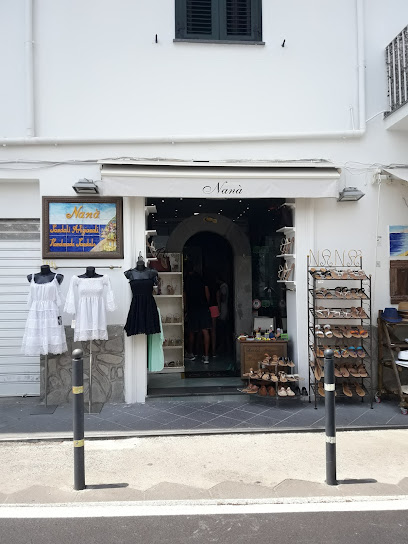
Emporio Sirenuse
Discover the essence of Italian fashion at Emporio Sirenuse, a premier destination for stylish accessories in the heart of Positano.
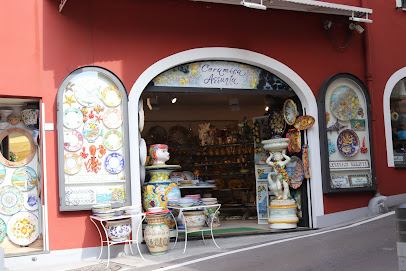
Emporio Della Ceramica
Explore Emporio Della Ceramica, a pottery paradise in Positano showcasing exquisite handcrafted ceramics reflecting Italian artistry.
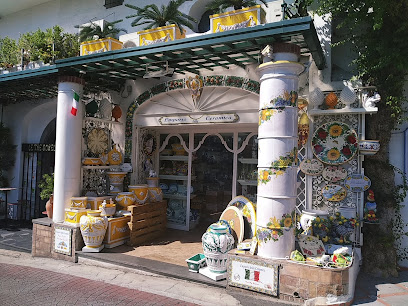
Sapori E Profumi Di Positano
Experience the culinary delights of Positano at Sapori E Profumi Di Positano, where authentic flavors and local treasures await.
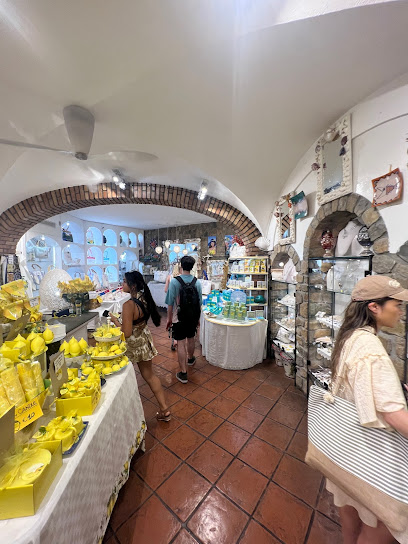
Moda Positano - Rino Boutique
Experience the essence of Italian fashion at Rino Boutique in Positano, where style meets the stunning Mediterranean backdrop.
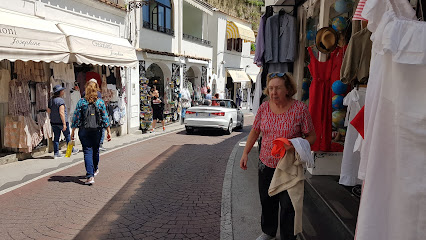
Via Marconi Di Massimiliano Fusco Sas
Explore the charm of Positano at Via Marconi Di Massimiliano Fusco Sas, your go-to gift shop for unique local souvenirs and artisan treasures.
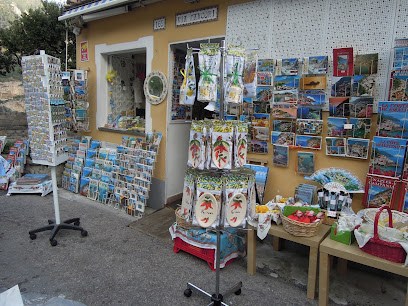
Casa Mastro Positano
Discover the essence of Italian fashion at Casa Mastro Positano, where local craftsmanship meets stunning coastal style.
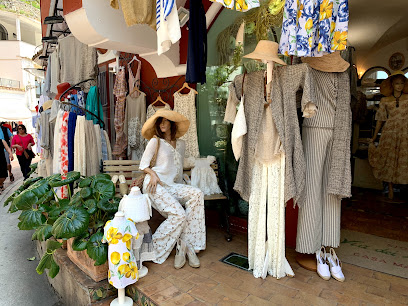
Ceramica Assunta
Explore the beauty of handcrafted ceramics at Ceramica Assunta in Positano, where artistry meets tradition in every vibrant piece.
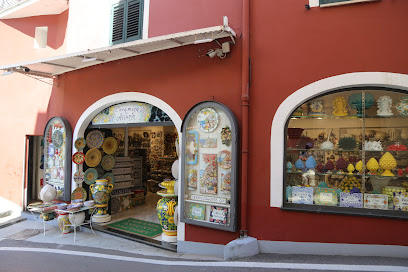
Luisa Positano
Experience the elegance of Italian fashion at Luisa Positano, a splendid women's clothing store offering unique styles in a stunning coastal setting.
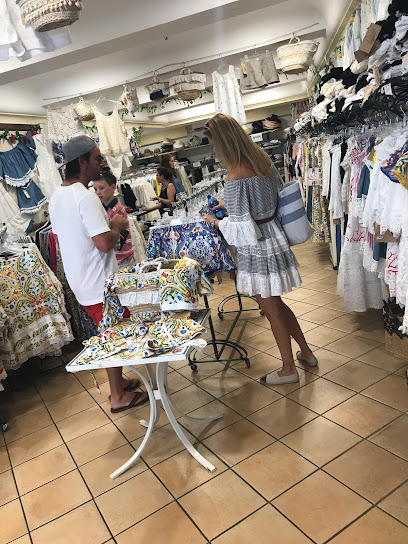
La Botteguccia Positano da Giovanni
Discover exquisite Italian footwear at La Botteguccia Positano, where style meets artistry in the heart of the Amalfi Coast.
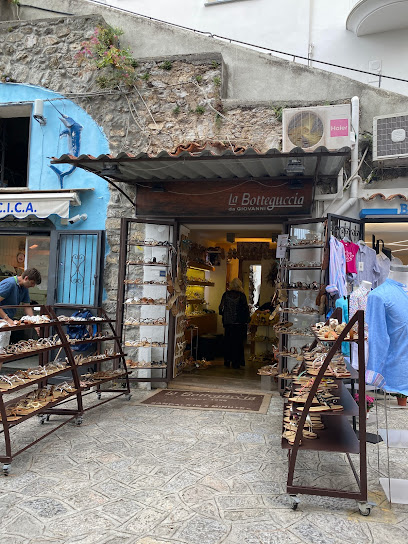
Boutique Three Danari
Explore Boutique Three Danari in Positano for exquisite footwear that marries Italian craftsmanship with contemporary style against a stunning coastal backdrop.
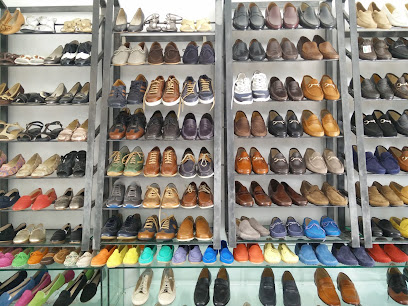
CB by Kore
Explore the unique artisan souvenirs at CB by Kore, a charming shop in Positano capturing the essence of Italian craftsmanship.

La Bottega Di Brunella
Explore La Bottega Di Brunella in Positano for exquisite handcrafted clothing and unique fabrics that capture the essence of Italian craftsmanship.
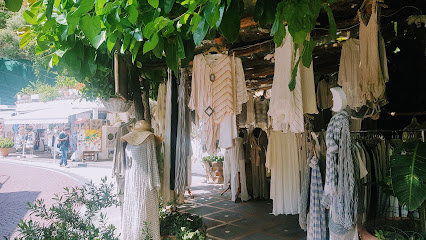
Missoni
Experience the vibrant luxury of Missoni Boutique in Positano, where Italian fashion meets the stunning Amalfi Coast.
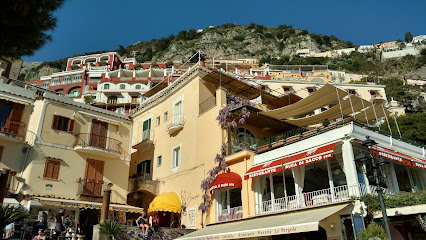
Essential bars & hidden hideouts
Il Tridente Positano
Experience the enchanting flavors of Italy at Il Tridente Positano, where stunning views meet exceptional cuisine on the Amalfi Coast.
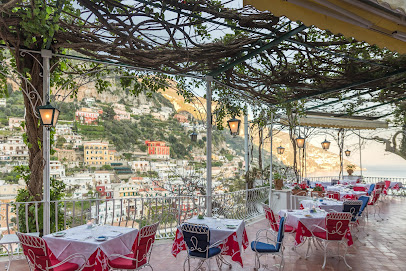
Bar Paradise Positano
Experience the breathtaking views and authentic flavors at Bar Paradise Positano, the perfect bar for relaxation and local delicacies.

Ocean Bar
Discover the vibrant Ocean Bar in Positano, where stunning sea views and refreshing cocktails create the perfect coastal escape.
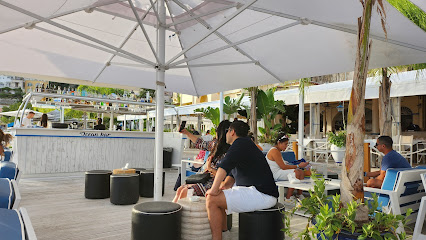
Franco's Bar
Experience the charm of Franco's Bar in Positano, where exquisite cocktails meet stunning views of the Amalfi Coast.
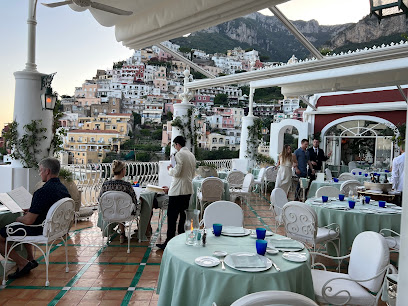
Bar Internazionale
Discover Bar Internazionale in Positano, where local flavors meet stunning coastal views in a charming bar atmosphere.
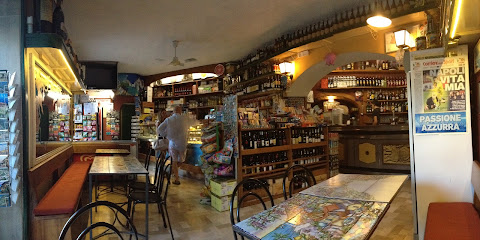
Blu Bar Positano
Discover the vibrant spirit of Blu Bar Positano, where cocktails meet stunning Mediterranean views in a lively coastal atmosphere.
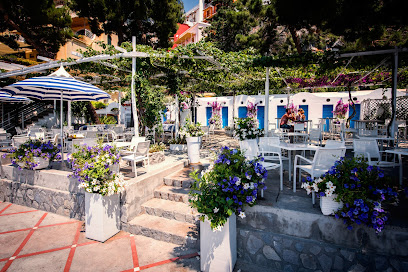
La Brezza
Experience the enchanting flavors of the Amalfi Coast at La Brezza, a charming bistro in the heart of Positano.
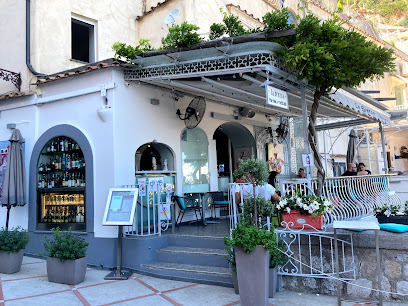
The wine shop positano vini e panini
Experience the finest local wines and artisanal delicacies at Positano Vini e Panini, a gourmet grocery store and wine bar in the heart of Positano.
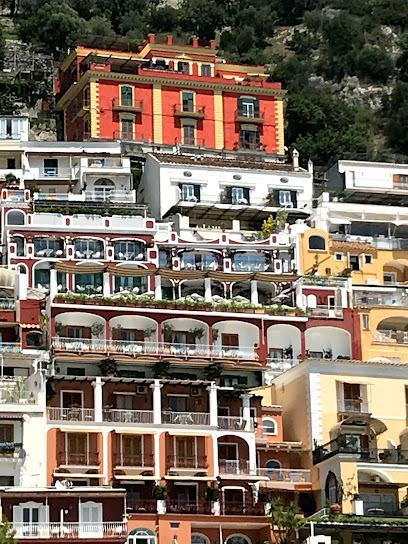
Gabrisa Food and WIne
Discover the exquisite flavors of Positano at Gabrisa Food and Wine, where local wines meet authentic Italian cuisine in a breathtaking setting.
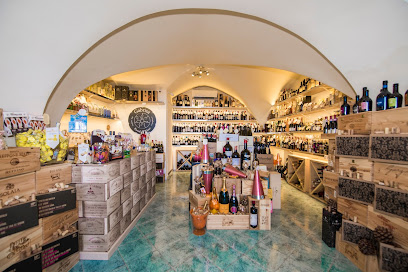
Eden Sky Bar Positano
Experience breathtaking views and exquisite cocktails at Eden Sky Bar in Positano, the perfect rooftop escape on the Amalfi Coast.
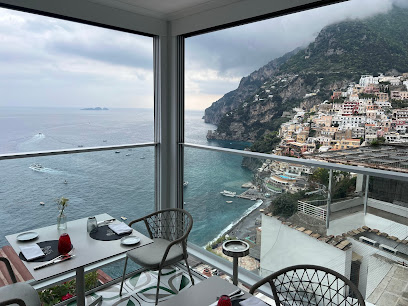
Le Tre Sorelle Wine Room
Discover the exquisite flavors of Italian wines at Le Tre Sorelle Wine Room, a cozy gem in the heart of Positano, perfect for every wine lover.
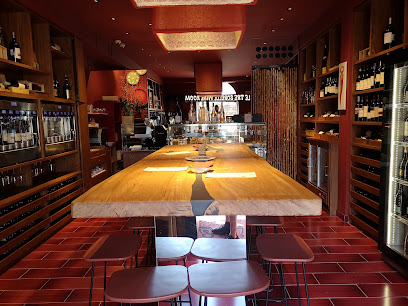
L'alternativa - Cocktail Bar on the Pier
Discover the charm of Positano at L'alternativa, a cocktail bar on the pier offering stunning views and refreshing drinks.
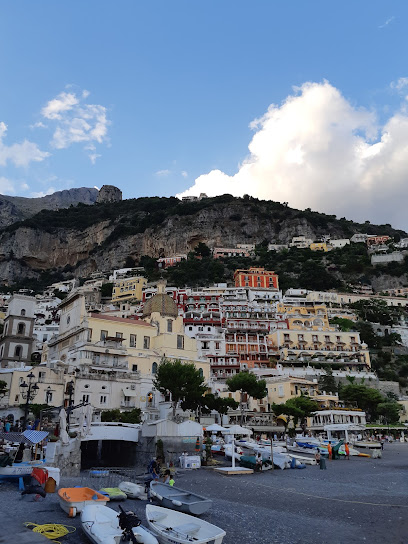
La Giara Rooftop Bar
Discover breathtaking views and delightful cocktails at La Giara Rooftop Bar in Positano, a perfect spot for sunset lovers.
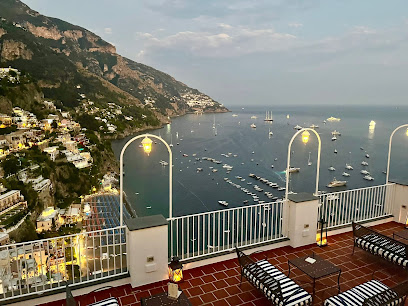
Fly
Experience the vibrant nightlife and exquisite cuisine at Fly Lounge Bar, the ultimate destination for fun and flavor in Positano.
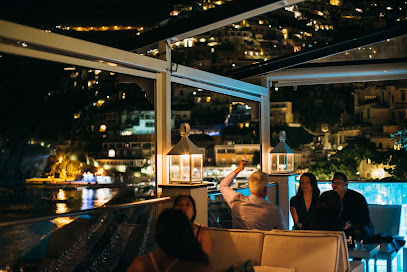
IL Canneto Bar & B&B
Experience the charm of Positano at IL Canneto Bar & B&B, where breathtaking views meet authentic Italian hospitality.

Travel experiences inspired by this city
Explore more travel diariesLocal Phrases
-
- HelloCiao
[chow] - GoodbyeArrivederci
[ah-ree-veh-dehr-chee] - YesSì
[see] - NoNo
[noh] - Please/You're welcomePer favore/Prego
[pear fah-voh-reh/preh-goh] - Thank youGrazie
[grah-tsyeh] - Excuse me/SorryMi scusi/Scusa
[mee skoo-zee/skoo-zah] - How are you?Come stai?
[koh-meh stai] - Fine. And you?Bene. E tu?
[beh-neh. eh too] - Do you speak English?Parli inglese?
[pahr-lee een-gleh-zeh] - I don't understandNon capisco
[nohn kah-pee-scoh]
- HelloCiao
-
- I'd like to see the menu, pleaseVorrei vedere il menù, per favore
[vohr-ray veh-deh-reh eel meh-noo, pair fah-voh-reh] - I don't eat meatNon mangio carne
[nohn man-joh cahr-neh] - Cheers!Salute!
[sah-loo-teh] - I would like to pay, pleaseVorrei pagare, per favore
[vohr-ray pah-gah-reh, pair fah-voh-reh]
- I'd like to see the menu, pleaseVorrei vedere il menù, per favore
-
- Help!Aiuto!
[ah-yoo-toh] - Go away!Vai via!
[vah-ee vee-ah] - Call the Police!Chiama la polizia!
[kyah-mah lah poh-lee-tsyah] - Call a doctor!Chiama un dottore!
[kyah-mah oon doh-toh-reh] - I'm lostMi sono perso
[mee soh-noh pehr-soh] - I'm illSto male
[stoh mah-leh]
- Help!Aiuto!
-
- I'd like to buy...Vorrei comprare...
[vohr-ray cawm-prah-reh] - I'm just lookingSto solo guardando
[stoh soh-loh gwar-dahn-doh] - How much is it?Quanto costa?
[kwahn-toh koh-stah] - That's too expensiveÈ troppo caro
[eh troh-poh cahr-oh] - Can you lower the price?Puoi abbassare il prezzo?
[pwoy ahb-bahs-sah-reh eel preht-soh]
- I'd like to buy...Vorrei comprare...
-
- What time is it?Che ora è?
[keh oh-rah eh] - It's one o'clockÈ l'una
[eh loo-nah] - Half past (10)Sono le dieci e mezza
[soh-noh leh dyeh-chee eh meh-tsah] - MorningMattina
[maht-tee-nah] - AfternoonPomeriggio
[poh-meh-ree-joh] - EveningSera
[seh-rah] - YesterdayIeri
[yeh-ree] - TodayOggi
[oh-jee] - TomorrowDomani
[doh-mah-nee] - 1Uno
[oo-noh] - 2Due
[dweh] - 3Tre
[treh] - 4Quattro
[kwah-troh] - 5Cinque
[cheen-kweh] - 6Sei
[say] - 7Sette
[seht-teh] - 8Otto
[oh-toh] - 9Nove
[noh-veh] - 10Dieci
[dyeh-chee]
- What time is it?Che ora è?
-
- Where's a/the...?Dov'è...?
[doh-veh] - What's the address?Qual è l'indirizzo?
[kwahl eh leen-dee-ree-tsoh] - Can you show me (on the map)?Puoi mostrarmi (sulla mappa)?
[pwoy mohs-trahr-mee (sool-lah mahp-pah)] - When's the next (bus)?Quando è il prossimo (autobus)?
[kwahn-doh eh eel prohs-shee-moh (ow-toh-boos)] - A ticket (to ....)Un biglietto (per ....)
[oon beel-lyet-toh (pair)]
- Where's a/the...?Dov'è...?
History of Positano
-
Positano's roots trace back to the ancient Greeks and Romans. It was originally a small fishing village that benefited from its strategic location along the Mediterranean coast. Artifacts from this period, such as pottery and ancient coins, have been discovered in the area.
-
During the Middle Ages, Positano became part of the powerful Maritime Republic of Amalfi. The town flourished as a bustling maritime hub, with its ships trading goods like spices, silk, and precious metals across the Mediterranean.
-
In the 9th and 10th centuries, Positano faced numerous attacks from Saracen pirates. To protect themselves, the inhabitants built watchtowers along the coast, many of which still stand today as historical landmarks. These towers were equipped with bells to alert the townspeople of impending raids.
-
Positano experienced a period of prosperity during the Renaissance. Wealthy merchant families built opulent villas and churches adorned with impressive artworks. The Church of Santa Maria Assunta, with its iconic dome covered in majolica tiles, dates back to this era and remains a central feature of the town.
-
In the 19th century, Positano's fortunes declined due to the collapse of the maritime trade routes and economic hardships. Many residents emigrated to the United States and South America in search of better opportunities. The population dwindled, and the town's economy suffered.
-
Positano was rediscovered by artists and writers in the early 20th century. Its picturesque beauty attracted figures like John Steinbeck, who famously described it as a 'dream place.' This period marked the beginning of Positano's transformation into a popular tourist destination.
-
During World War II, Positano was occupied by German forces. After the war, the town saw a significant boom in tourism as international travelers flocked to its scenic cliffs and azure waters. The post-war period also saw the restoration of many historical buildings and the development of modern amenities.
-
Today, Positano is renowned for its vibrant culture and traditions. The town hosts various festivals, such as the Feast of the Assumption, which features processions, fireworks, and traditional music. Local crafts, including handmade sandals and ceramics, are celebrated and preserved by artisans.
Positano Essentials
-
Positano is located on the Amalfi Coast in Italy. The nearest major airport is Naples International Airport (NAP), approximately 60 kilometers away. From Naples, you can take a direct bus operated by the Curreri Viaggi company to Sorrento, followed by a local SITA bus or ferry to Positano. Alternatively, you can hire a private transfer or drive a rental car. For those arriving by train, the nearest major train station is in Salerno, from where you can take a ferry or a bus to Positano.
-
Positano is a small town, and many attractions are within walking distance. The town's narrow, winding streets make walking the most practical mode of transportation. For longer trips along the Amalfi Coast, SITA buses and ferries are available. Taxis are also an option but can be expensive. Renting a scooter is a popular choice for exploring the surrounding areas. Note that parking can be limited and costly in Positano.
-
The official currency in Italy is the Euro (EUR). Credit cards are widely accepted in Positano, including in hotels, restaurants, and shops. However, it is advisable to carry some cash for smaller establishments, cafes, and local markets. ATMs are available throughout the town if you need to withdraw money.
-
Positano is generally a safe destination for tourists. However, like any tourist destination, it is important to take standard precautions. Keep an eye on your belongings in crowded areas and avoid leaving valuables unattended. There are no specific high-crime areas targeting tourists, but it's always wise to stay vigilant, especially in busy tourist spots and on public transportation.
-
In case of an emergency, dial 112 for immediate assistance. Positano has a local police station and a medical clinic for minor health issues. For more serious medical emergencies, the nearest hospital is in Sorrento. It is recommended to have travel insurance that covers medical emergencies. Pharmacies can be found in town for over-the-counter medications.
-
Fashion: Do dress stylishly but comfortably; Positano is known for its chic, casual fashion. Avoid wearing beachwear away from the beach. Religion: Do respect local customs when visiting churches; cover your shoulders and knees. Public Transport: Do validate your bus tickets before boarding. Don't eat or drink on public transport. Greetings: Do greet people with a friendly 'Ciao' or 'Buongiorno.' A handshake is common. Eating & Drinking: Do try local dishes like 'spaghetti alle vongole' and 'delizia al limone.' Don't rush through meals; dining is a leisurely activity.
-
To experience Positano like a local, visit during the shoulder seasons (April-May or September-October) to avoid the crowds. Take a leisurely stroll along the Sentiero degli Dei (Path of the Gods) for breathtaking views. Visit the local market for fresh produce and local delicacies. Engage with locals; they are often friendly and willing to share stories and recommendations. Don't miss the opportunity to take a boat tour to explore hidden coves and beaches along the Amalfi Coast.
Trending Landmark in Positano
-
Arienzo Beach Club Positano
-
Costiera Amalfitana Positano
-
Chiesa di Santa Maria Assunta
-
Le Sirenuse
-
Art Hotel / Hotel Pasitea
-
Ceramiche Casola
-
Spiaggia di Positano Marina Grande
-
MAR Positano Villa Romana
-
Positano Boats
-
Casa Nilde
-
Villa Fortuna
-
Kayaking in Positano
-
Swirl the Glass
-
Cassiopeia Cooperative arl
-
Villa Boheme Exclusive Luxury Suites
Nearby Cities to Positano
-
Things To Do in Sorrento
-
Things To Do in Amalfi
-
Things To Do in Ravello
-
Things To Do in Pompeii
-
Things To Do in Capri
-
Things To Do in Herculaneum
-
Things To Do in Naples
-
Things To Do in Matera
-
Things To Do in Bari
-
Things To Do in Rome
-
Things To Do in St. Peter's Square
-
Things To Do in Apostolic Palace
-
Things To Do in Vatican Necropolis
-
Things To Do in St. Peter's Basilica
-
Things To Do in Sistine Chapel














